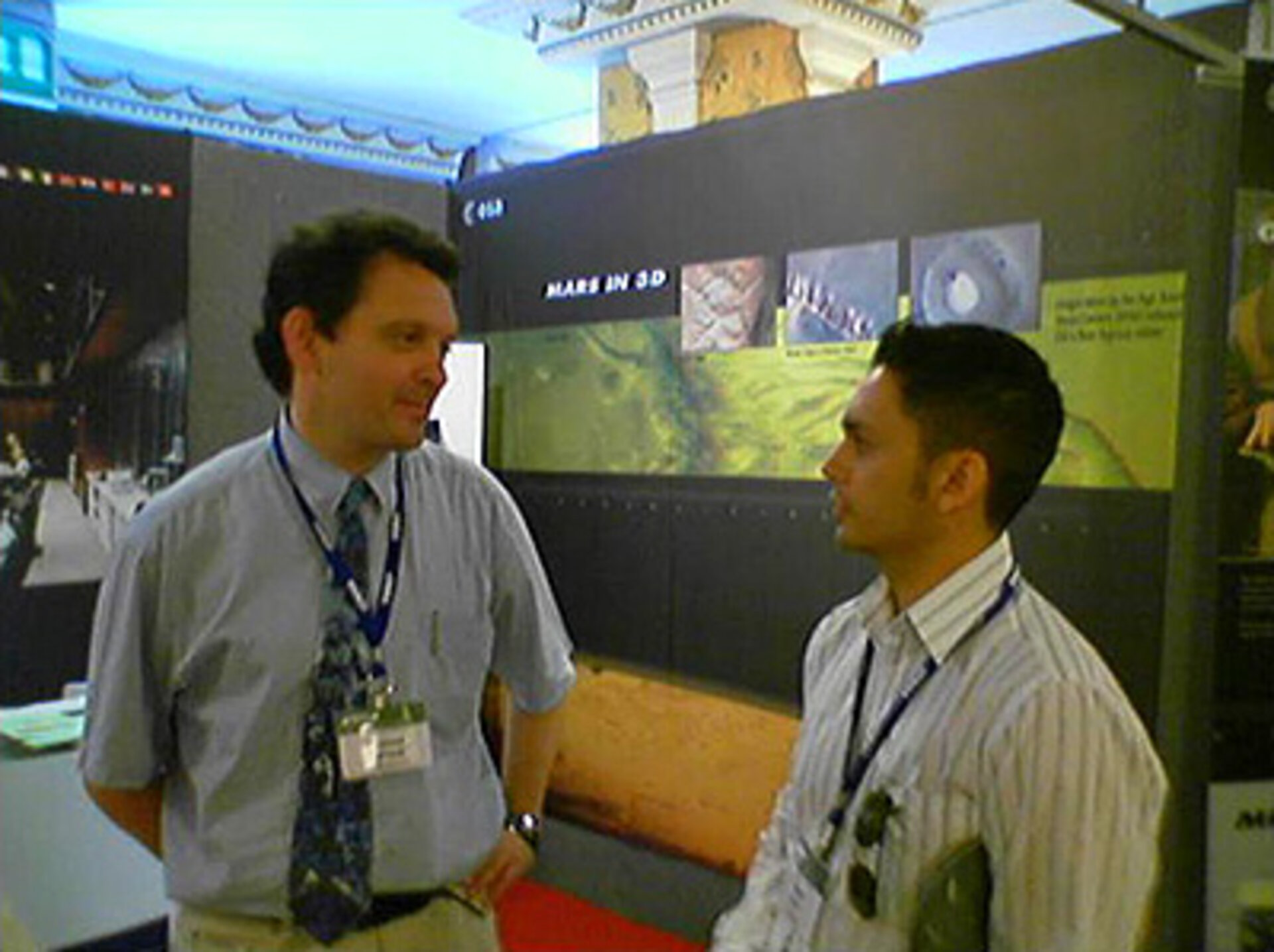ExoMars operations: Q&A with robotic expert
Reinhold Bertrand, an engineer in ESA’s Operations directorate, has extensively studied the requirements for robotic exploration on Mars. He says that autonomous operation and decision-making become critical when coping with the needs of on-surface mobility, a sophisticated payload and complex scientific goals.
1. Future ESA missions such as ExoMars foresee autonomous rovers operating on planetary surfaces far from Earth and outside of d
Autonomous operation of a rover in an unknown environment implies a cycle of five basic tasks. First, the rover must be able to sense and record the environment it is facing, meaning it must perceive its environment. The most prominent technology for this purpose is 3D stereo vision, complemented by so-called 'odometric' sensors, such as wheel rotation sensors, position sensors in the rover chassis, et cetera.
Next, based on this raw environmental data, the rover must understand its environment, meaning that it must process and interpret raw sensor data in order to characterise the surface topography and structure. In doing so, the rover will create a digital terrain model of its surrounding environment, establishing or modelling the 3D geometry of the nearby surface, which is the second basic task.
Then, it must locate itself in the digital terrain model, or localise itself.
The next task is the trickiest: Knowing its own position and the target position to be reached, the rover must autonomously select a trajectory or path over the surface to move to the target; this is the 'decision' task. It must make this decision while minimising risk of slippage, tip-over, or collision with obstacles. Moreover, the use of scarce resources, like electrical power, should be minimised. Clearly, this task involves critical decisions with direct operational impact.
Finally, the rover must execute the trajectory it has defined.
2. Why are traditional ground control systems operating on Earth at a satellite control facility like ESOC not able to handle th
Traditionally, space operations are rather conservative as far as autonomy is concerned. It is like some concerned parents, who would prefer to tightly hold the hand of their child while walking around in order to minimise any risk that the child might fall.
The new aspect of robotic operations for missions like ExoMars is that the mission controllers must allow the child to 'walk on its own'. The constraints of communication links — only one or two sessions per day for Mars — together with the limitations of radio signal travel time, science instrument operations, and sensor performance require that operational decisions are made on the planetary surface without having a human operator in the loop.
3. How does ExoMars compare to current-generation rover capabilities, like those of NASA's Mars Rovers?
At first glance, the ExoMars robotic vehicle looks quite similar to the Mars Explorer Rovers in so far as configuration, mass and size are concerned. However, there are substantial differences in payload and scientific objectives.
For example, the distance to be travelled each day is significantly higher, imposing the need for autonomous path planning and execution on the planet's surface.
Moreover, the ExoMars payload is a complex robotic system on its own. Imagine just what it means to deploy and operate a drill which bores 1 or 2 metres below the surface. Doing this on Earth without an operator having 'hands on' control of the system is already a challenge; doing so remotely on Mars is much more so.
4. What are some of the new techniques ESA is considering for autonomous control?
The new technologies are largely found in the field of sensor technology and data processing. The software architecture must be able to flexibly adapt to the environmental and operational situation, ranging form a direct control mode, for contingency situations, for example, to a fully autonomous control mode for long-range traverses.
5. What sort of new science results can we hope to obtain using autonomous spacecraft, orbiters, landers and rovers?
Increasing a system's autonomy can enable new modes of use for scientists.
First, it allows substantially increasing the reach of the mobile elements. With an operator in the loop, the daily increment for movements is limited by the reach of the sensors acquiring environmental information, while autonomy allows this restriction to be overcome.
It also enhances flexibility to cope with unknown situations, which are typical for exploration-type tasks. As another benefit, autonomy allows science operations to become more symmetric. While direct-controlled robotic experiments are inevitably limited in reach and frequency, autonomous rover and payload operations can allow the number and frequency of samples or measurements to be increased, thus evolving from a 'single sample' situation to enable systematic recording and analysis of the planetary environments.
6. How will the art and science of ground controlling for space missions have to evolve?
You could call it a change in paradigm. We must learn to let the child go out on its own.
This implies, of course, establishment of the required sensor and control technologies, but further requires a new culture of defining and executing operations. Instead of planning all operations down to the last step in a deterministic way, we will have to understand operations more as the specification of targets without knowing precisely where the system will finally end up and what it will discover on its way.
It's similar to allowing your child out into the garden — you won't know which flower she will find or how she will move about, but you know she'll find something wonderful.


